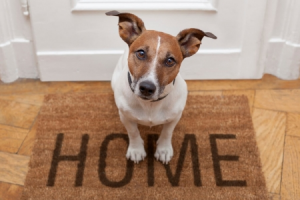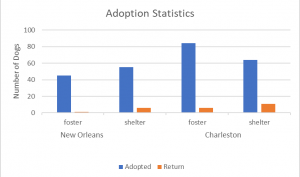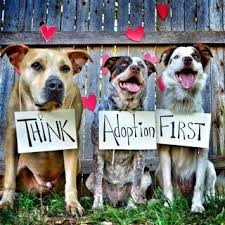https://www.youtube.com/watch?v=lNfbA33ZjBg&feature=youtu.be
According to the Humane Society of the United States, 6-8 million animals end up in the shelters and about half of those animals will never be adopted. About 25% of pets in shelters are purebreds, some of these animals are abandoned and others come from breed-specific rescue groups. There are no national statistics on shelter intake since there is no central database that exists in the country. Most shelter and rescue groups conduct thorough behavioral analysis of each pet to ensure they are a right fit for your family. Yes, there are times that animal behavior can be unpredictable, as was the case of a Staten Island family that adopted a boxer mix and a family member was attacked on May 13, 2019. These same groups can provide advice and additional help to ensure that the relationship with your new pet is the best it can be for the rest of the pet’s life and you don’t have to go at it alone.
Pet adoption is not an easy process, sometimes you can’t find the one you are looking for right away. Sadly shelters receive new animals every day and it’s worthwhile to keep checking back or to be placed on a wait list, so you can kept aware of any potentials that match your preferences. Organizations such as the shelterpetproject.org can help you prepare your home for the arrival of your pet and how to help them adjust to their new home. Some organizations will allow you to adopt the same day, such as the North Shore Animal League on Long Island and other shelters have multiple potentials new parents for the same animal and it’s a waiting game to be chosen based on selected criteria. As mentioned in the benefits of adopting, it is significantly cheaper than purchasing a fashion breed or purebred. Amounts will vary by shelter and location, the numbers below from the North Shore Animal League site. Shelters will neuter the animals prior to adoption and have all the necessary vaccinations before releasing the animals. A purebred Siberian Husky from SnowPack Huskies, a breeder in New Jersey runs about $900 for a puppy without neutering. Dalmatian puppies start at $800 from Double D Dalmatians in Pennsylvania. The cost difference is significant between shelters and breeders.
The question to ask is what kind of pet is the best fit for your home. Do you live in the city or in a house? Is a special needs dog a consideration? Do you have enough time to devote to the daily needs of a dog, including daily walking and waste pick-up. Does anyone have allergies to consider when choosing a pet. Are there resident pets that will need time to acclimate? Doing your research in advance will make your search easier and increase your chances that your new pet will be in their forever home. These are the same questions, that one can ask of themselves if they are considering buying a pet. Most shelters have a limited time to return the animals back to the shelters if things do not work out.
Shelters have dedicated pages for adoptable pets with basic information, including gender, age and any traits that may show up during their behavior analysis. A phone call or visit can verify availability of the animal. Potential adopters can visit the animals and spend time with the ones that fit their needs and submit an application with a counselor who will walk you through the process. An important part of the adoption process is to match the lifestyle and needs of the adopter with the individual animal being considered. Spending time and repeat visits to the animal will help you make an informed decision. The adoption screening process is designed to ensure that each animal is placed in a responsible, loving home and with an adopter who is prepared to make a lifelong commitment. The screening process may seem strict or time-consuming, but it is to consider every animal’s needs and best interests and reduce returns back to the shelter.
Another option may include fostering pets, if you’re not able to commit long-term. This gives a chance for shelter animals to re-acclimate to home living if they are not quite ready for adoption. Some of these animals need round the clock feeding or need to recuperate from illness or injury. Fostering frees up shelter space and increases the chances these foster animals will be adopted, as well as a lower rate of return to the shelter, as noted in a study by Heather Gibbons on behalf of the ASPCA. In the her study, she tracked the adoption rates of two shelter sites, one in New Orleans, Louisiana and one in Charleston, South Carolina with the inclusion of a fostering program. The fostering program allowed dogs to be marketed and included in the community, outside of the shelter for about a month each. If the foster dogs were not adopted within a month, they were returned to the shelter’s general adoption area.
For New Orleans, the return was 2% for the fostered dogs and 11% for the shelter dogs. In the Charleston group, the return was 7% for fostered and 17% for shelter dogs. In both groups, the return is over 10% for the shelter dogs. Reasons cited for returning the dogs, were unrealistic expectations and resident dog not getting along with newly adopted dog. There was one issue of dog allergies and another had an issue with their landlord. These are the same reasons that people should research before buying or adopting a dog. The return to shelter rate is about ten percent from studies cited by retailer Orvis. The reasons cited by Orvis, echo many of the same reasons the Gibbons study stated regarding pet adoption. Orvis published a detailed blog on adoption and the need to do your homework before adopting.





